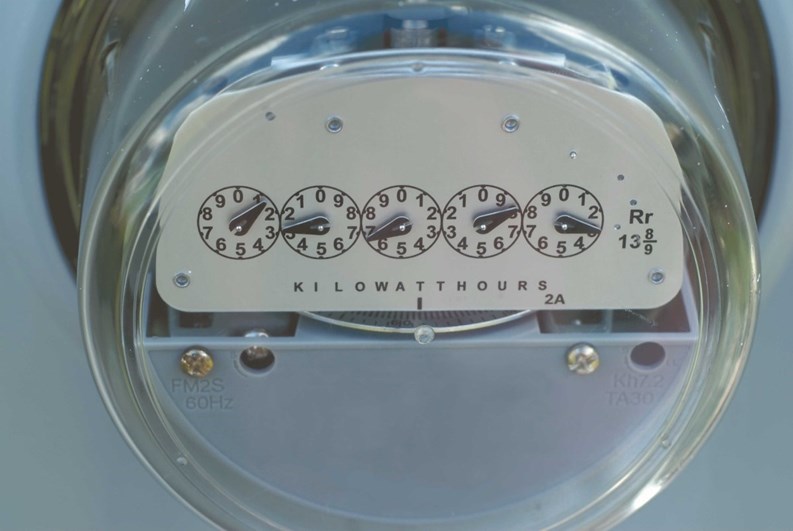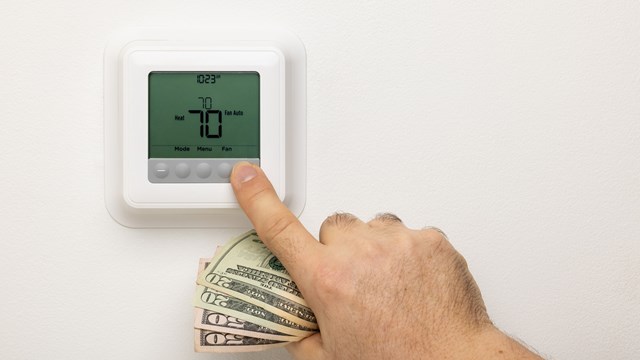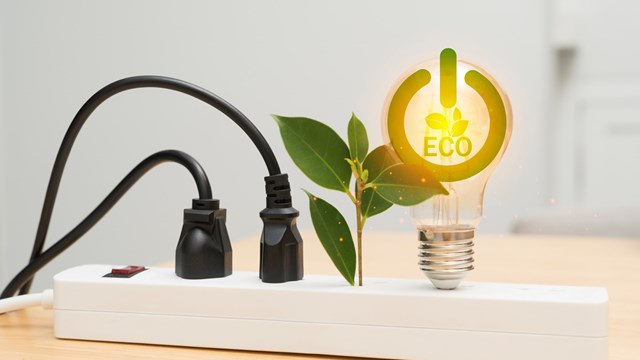We all know that famous anatomical ditty: “The head bone’s connected to the neck bone”—and so on. ( I imagine that those indelible lyrics have pulled more than a few aspiring doctors through their biology exams). But when it comes to co-op and condo buildings, there’s no such song to educate board members about the physical skeleton of their building structures. Perhaps there should be.
Besides the obvious physical aspects of a multi-family building—things like the walls, ceilings, windows, roof, etc.—there are the less visible components that are just as vital to the functioning of the building. These are major mechanical components, such as furnaces, boilers, A/C chillers, and so forth. Think of them as organs.
It’s easy to tell when a carpet is cleaned, a storm window is replaced, or a leaky faucet is fixed, but when a boiler is installed, you probably pay no mind. With the proliferation of “green” technology and rising concerns about fuel costs and environmental impact, however, manufacturers are beginning to take the green movement into account when designing and marketing equipment to co-op and condo buildings. So, no, maybe it won’t improve the look of the lobby, but greener, cleaner technology can show up in other ways—like in the form of a decreased utility bill. Now someone should write a song about that.
H2O
Water is vital to human existence. It also seems to be the common denominator in these major mechanical components. And according to Gerald Hirsch of the Water Group, LLC, in Brooklyn, recent advances in water treatment technology could offer significant energy and water savings.
“According to national statistics, up to 70 percent of a building’s maintenance costs are related to cooling and heating systems,” says Hirsch. “Even in areas such as New York City, which has relatively soft water, many are not familiar with the energy inefficiencies that typically result from scale buildup on the heat transfer surfaces, cooling towers, and boilers. Building owners are spending thousands of dollars a year in extra costs relating to energy and water wastage. With energy and water prices on the rise, this becomes a much more significant consideration for owners and managers.”
Universal Water Technologies, LLC, which serves the New York and national market, is an example of a company that markets relatively new technologies and applications that can incorporate different platforms of treatment, including electronically treating the water, which prevents scale from forming on the heat transfer surfaces, according to Hirsch.
In some cases, particularly for cooling towers, this can result in energy saving of anywhere from five to 30 percent. Plus, Hirsch adds, a good deal of water can be saved, as well, since more than 90 percent of the water that bleeds off can be avoided. “The water savings alone can be thousands of dollars per year,” says Hirsch.
But you may want to leave this to the professionals.
“As with any scientifically advanced technology, implementation is as crucial as the technology itself,” says Hirsch. “There are a number of factors that can impede performance and results. So don’t try this on your own. Make sure that you are dealing with a reputable company that has engineers with at least two years experience in implementing this technology. The savings difference between getting it working at 100 percent versus 75 percent will more than cover any extra cost.”
When choosing a supplier, Hirsch recommends you take the following questions into account:
* Do they have a minimum of two to five years engineering experience with this technology?
* Are they stuck selling only a single product or do they offer many solutions and are prepared to offer you the best solution available?
* Do they offer a minimum one-year satisfaction guarantee with your money back if the system does not function as promised?
* Do they offer a system that is programmable so that, in case the makeup of your water changes, your investment will be protected?
And another good tip in choosing any service provider is to check their references and make sure you have everything you need in writing.
Keeping Track
Whether it’s water, gas, or electricity you are worried about, the importance of meters cannot be overstated—and that’s where Don Millstein of Langhorne, Pennsylvania-based E-mon comes in. Meters, which can be provided for a building as a whole or for individual units, provide two key pieces of information: kilowatt-hours and peak demand. Millstein compares kilowatt-hours and peak demand to the type of information you can get from your car’s dashboard. Kilowatt-hours tell you exactly how much energy you’ve used—like an odometer tells you how far you’ve traveled—and peak demand clocks activity at its highest, like a speedometer. So, while you may have traveled 200 miles at an average speed of 50 mph, if a trooper clocks you at 75 mph, you’re getting a ticket. Similarly, if an energy company catches you at your peak demand, they will charge you more, assuming you are always using the same amount of energy.
“Companies want to get a good handle on not only total usage, but also peak demand so they don’t get charged more,” says Millstein, who recommends installing meters in individual units. “We encourage people to hold tenants responsible for electrical usage so hopefully they conserve.”
So how do you avoid a peak demand? “We go to the next level,” says Millstein. “We look at the pool, the laundry, etc. We drill down to see how energy is used and when it’s being used. To avoid a peak demand you don’t want to have them all on at the same time. How else do you know how to save money? You need baselines, a good understanding of your facility. That’s historically what we have done.”
But don’t accuse the metering business of being stuck in the past. In fact, just this year they’ve unveiled the Green Meter—“It’s in a green box and it gives you an estimate of how much money you spent and how much CO2 emissions you put out into the atmosphere,” says Millstein—which has already become an award-winning product. “You can see demand, dollars, and CO2 go down,” he says.
There are many ways to draw a tenant’s attention to a meter and therefore his consumption. Millstein suggests, in a multi-family building, putting a Green Meter in the lobby and creating a lobby display around it so that it becomes a focal point of the communal living environment.
Maybe you’re wondering what’s in it for you—as if saving the world isn’t enough. Well, there happens to be a ton of incentives, both on the state and federal level, for bringing your building into the age of “green.” The Energy Policy Act, which is actually coming to a close this year, offers a $1.80 per square foot tax deduction. According to Millstein, most tax deduction incentives come at the federal level. But there are plenty at the state level, too. And in New York, that means NYSERDA.
“They’re all about incentives,” Millstein says of NYSERDA.
Incentives
Indeed, NYSERDA—which stands for New York State Energy Research and Development Authority—is trying to make it easier for residential and multi-family buildings to implement greener technologies. And according to Sal Graven, a spokesman for the energy agency, a great approach you can take is by connecting a device—a lighting fixture, for example—that is already energy-efficient to something that improves the efficiency.
“One area that is most active in this approach is lighting,” says Graven. “Building management systems, HVAC, and chillers are also able to be interconnected. While technology changes every day, it is difficult to pinpoint a specific piece of machinery that is more efficient. Efficiency improvements are made daily.”
Additionally, NYSERDA offers incentive programs to residential customers to implement greener, cleaner technologies. The New York Energy $mart Multifamily Performance Program is one such opportunity. With a partner network consisting of engineers, energy consultants, and other industry professionals, this program customizes an approach that will specifically address the energy and operational needs of your building.
Buildings that are deemed eligible are then required to “benchmark their energy performance compared to a set of similar buildings,” according to the NYSERDA website. And then, these buildings, based on their relative ranks, are assigned a performance target. By implementing an Energy Reduction Plan and achieving your target, your building will qualify for NYSERDA incentives. There are other ways to qualify for incentives, as well. For example, you can receive $100 for replacing an old air conditioner with an Energy Star labeled model.
For even more information, check out one of the organization’s websites that deal specifically with residential or multi-family buildings: powernaturally.org or getenergysmart.org.
Plus, according to Graven, “NYSERDA’s Focus on Commercial Real Estate program offers online benchmarking services to monitor electric/energy consumption and evaluate which areas within the building could use upgrading—lighting, physical plant, insulation, etc.—with the overarching goal of improving the buildings energy efficiency.”
To learn more, visit nyserda.org/cre/ static/our-strategy.html.
Everyone it seems is going green these days. Join the movement, and head toward greener pastures.
Raphael Kohan is a freelance writer and copywriter living in New York City.







Leave a Comment